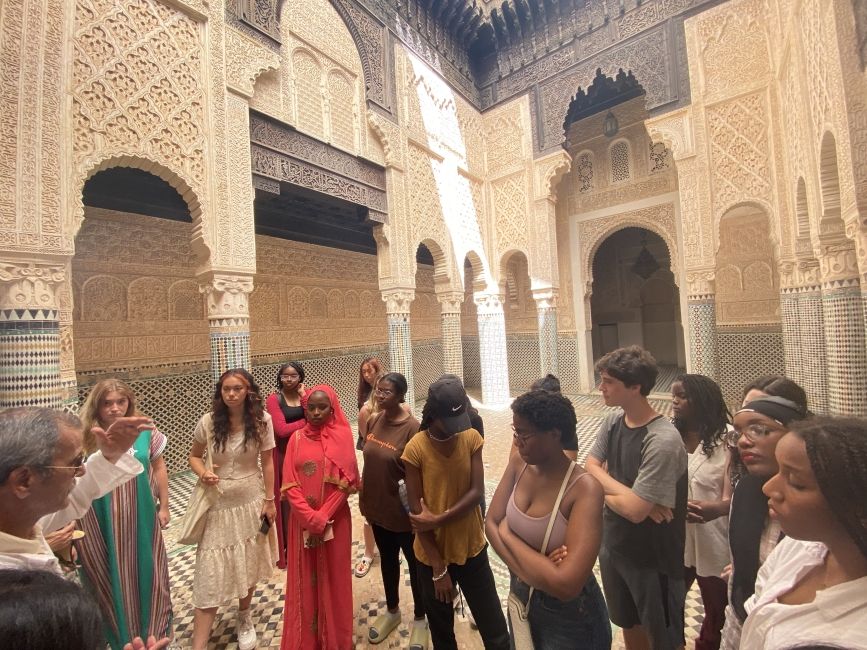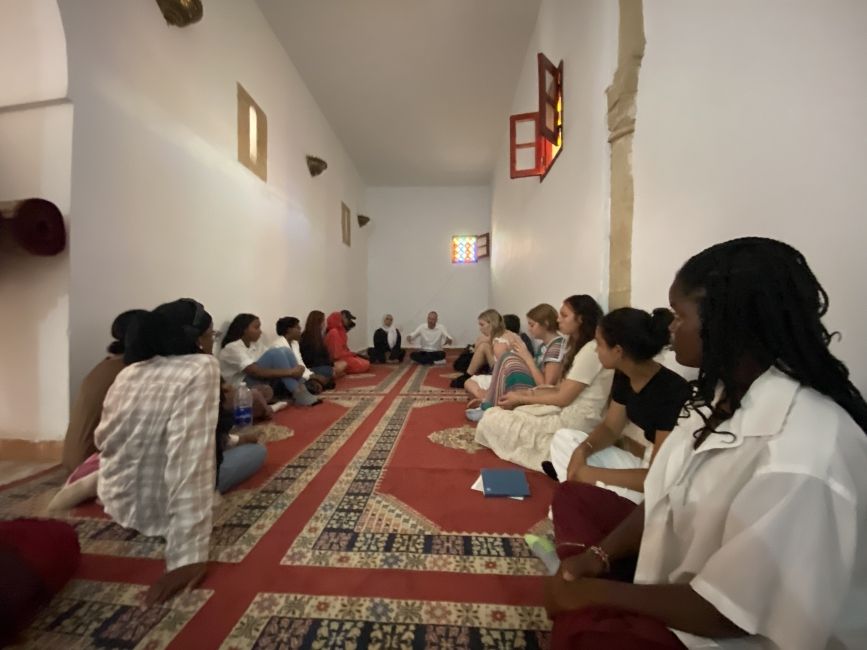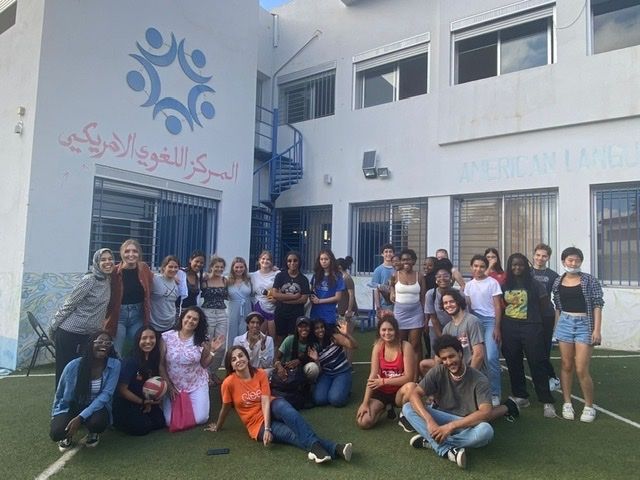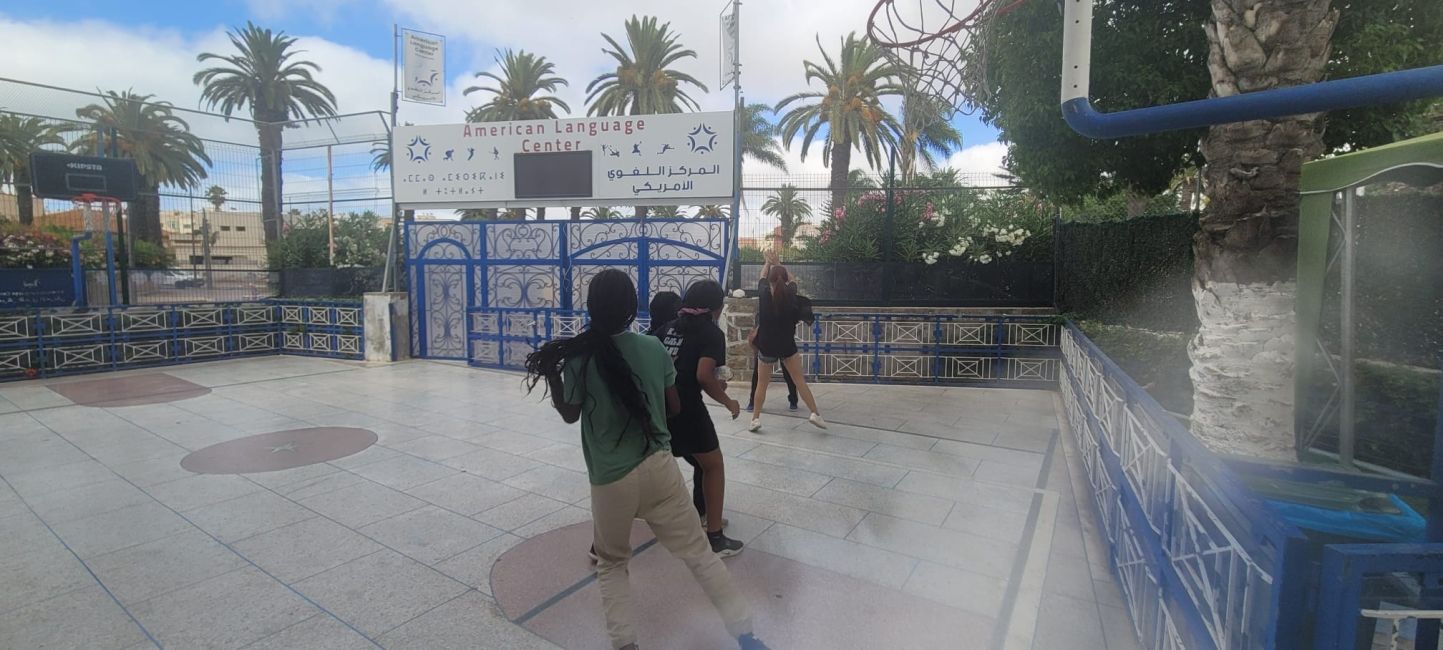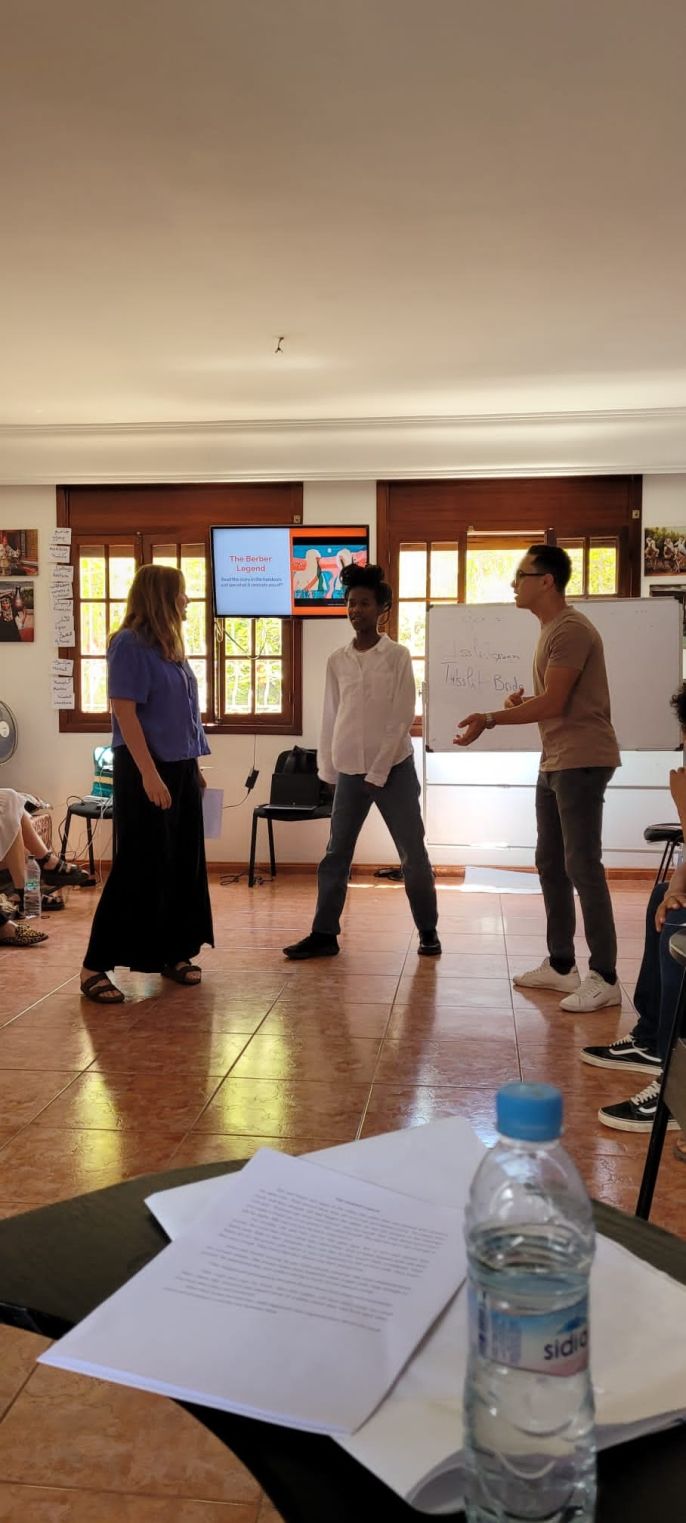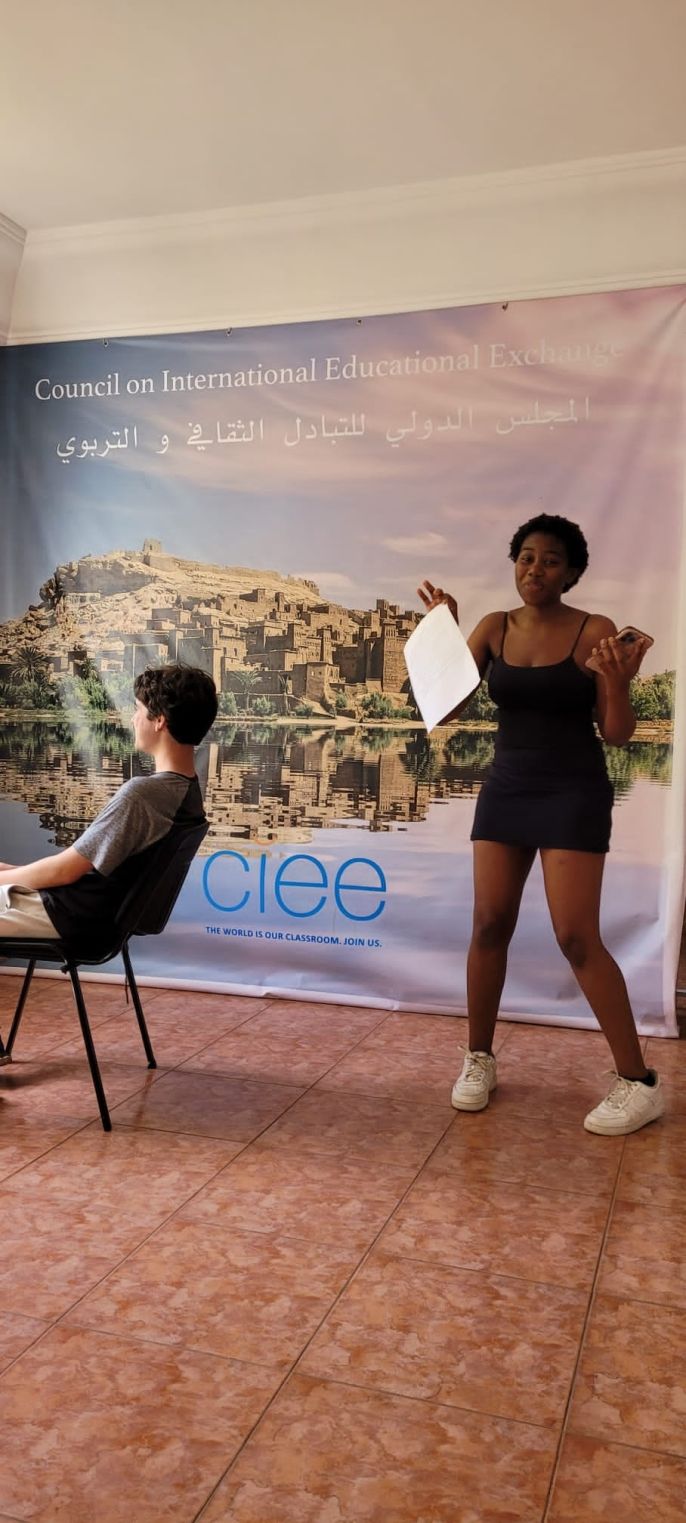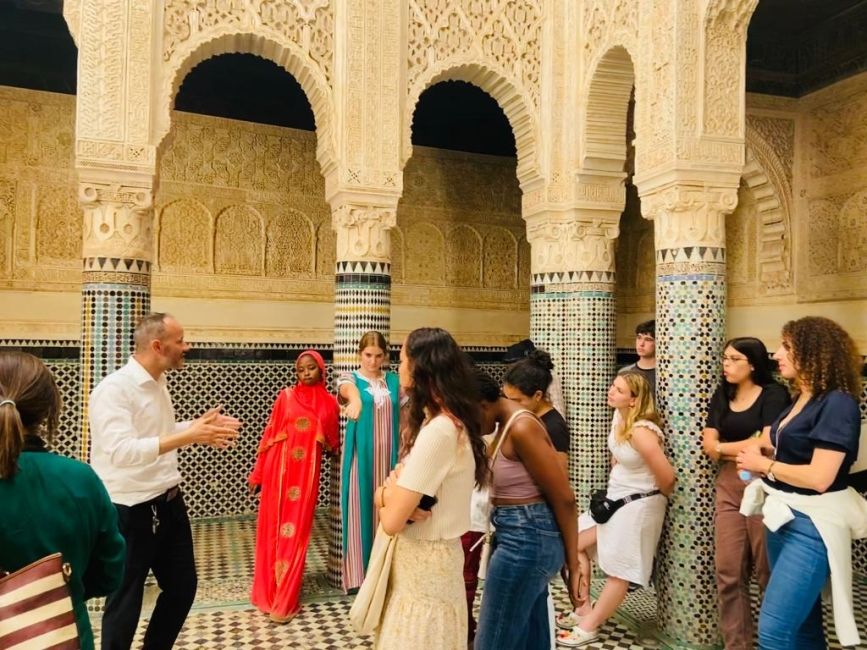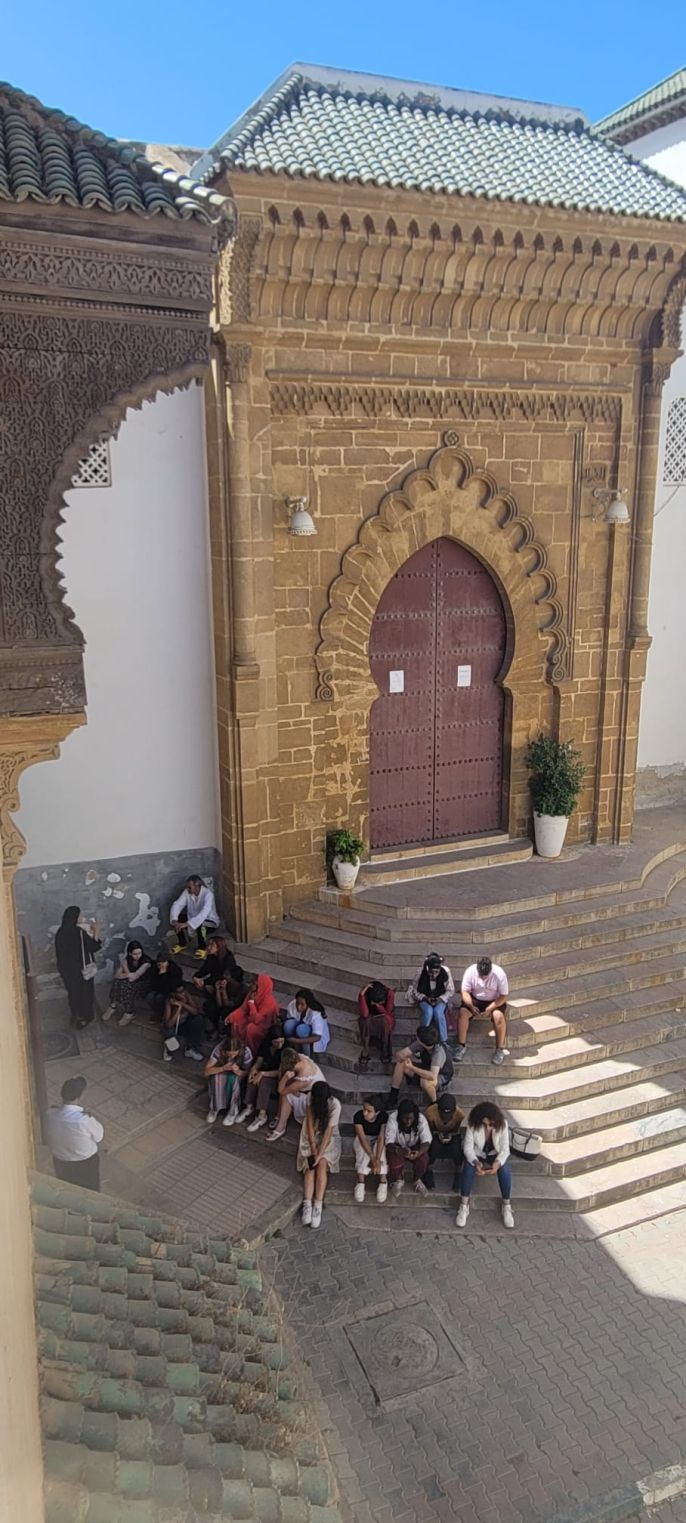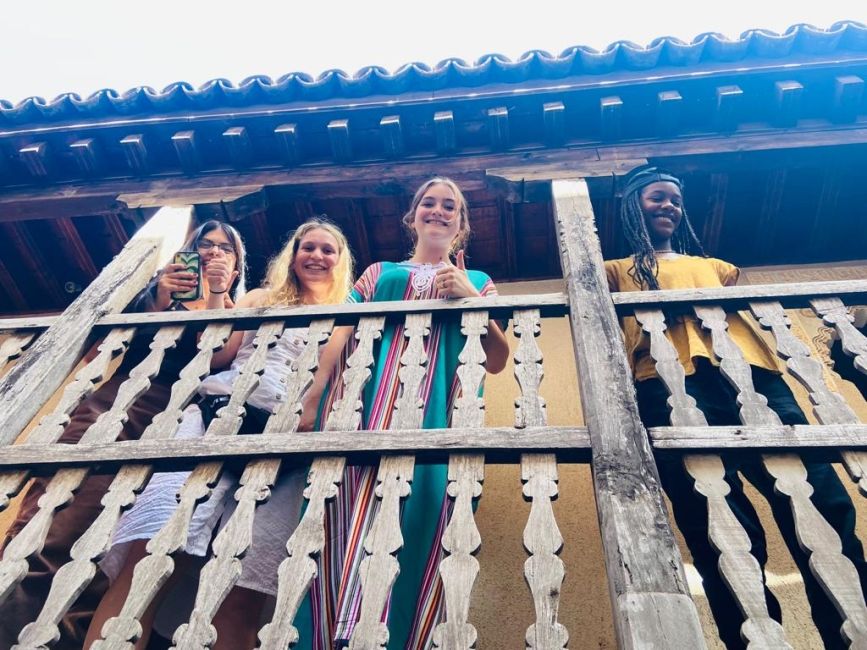Page 10 - More Fun Activities
On Wednesday it was all about sports! Students joined their peers from the other programs and went to Mohammadia to the American Language Center and played sports. The students were split into various groups: soccer, basketball, volleyball, arts and crafts, and board games. Each student was able to take part in the sports and activities that they wanted, while also being able to switch groups whenever they wanted. The speaker boomed as the students screamed for the ball. The students played a small soccer game, in which there was an overwhelming amount of smiles and laughter. Towards the end of the evening, students and teachers joined together to play a large game of volleyball with a net and a formal score board. The "court," which was actually just a soccer field, was filled with screams and laughter.
On Thursday the "Community Conversations" were really fun to observe, as the students now are able to carry on lengthy conversations with people they meet and actualy communicate effectively and meanigfully, and have fun doing that.
On Thursday afternoon, the students attended a workshop about the art of storytelling and and Moroccan legends from Author and English Teachr, Zakariaa AitOures. Zakariaa introduced the students to a couple of Moroccan legends that have a cross cultural connection to Disney tales, Shakespeare, and the tales from A Thousand and One Night. He told them the story of Isli and Tislit, the Amazigh Romeo and Juliet. The legend is inspired by authentic stories of the Amazigh tribes of the Aït Ibrahim and the Aït Yaaza, who were fiercely opposed to each other. A boy from the tribe of Aït Brahim and a girl from the tribe of Aït Ya'za loved each other very much, but these two Amazigh tribes were at war with each other continuously which won't let this love come to fruition. The two lovers had a pure love for each other, so deep that they could not live apart. Legend has it that their grief was the source of endless tears. So they decided to flee to Mount Isslan where they sat down and wept because of their fate. The tears they shed soon became two lakes, which were named after them, Isli and Tislit. The workshop was interactive and the students got to act out their own Isli and Tislit scenes that they wrote themselves.
On Friday, we visited a Quranic School in the city of Salé built in the 14th century and was in operation until the late 19th century. It is a place where young kids, ages 8-10, came to study and memorize the Quran, and be educated. Most stayed there for ten years without seeing any of their families or friends and doing nothing but study and recite the Quran. The school is a great representation of Islamic art and architecture which is characterized by geometric patterns and Arabic calligraphy.
Related Posts
Weekend in Marrakesh
Our Weekend in Marrakesh - This blog was written by one of our students - Nyx Lange Reflecting on our past weekend excursion to Marrakesh from our Moroccan base of... keep reading

Exploring Tangier: A Day in Morocco's Gateway to Africa
This past weekend, our group ventured to the north of Morocco to the vibrant city of Tangier where the Mediterranean Sea meets the Atlantic Ocean First, we met our guide... keep reading
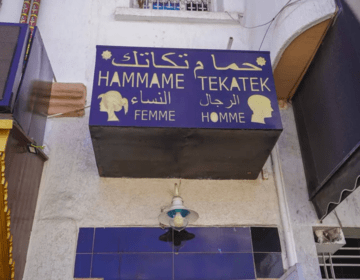
Bssaha wa Raha L'hammam🚰🪣🧼 بالصحة و الراحة الحمام
By Program Leader, Mohsin: Hey everyone! As your Moroccan program leader, I’m thrilled to introduce you to one of our country’s most cherished traditions: the hammam. If you’ve never heard... keep reading
